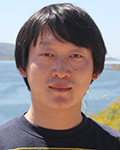2017
Yupeng Jiao
- Doctoral Student
- University of California, San Diego

Abstract
When the Chinese Communist Party came to power in 1949, the official statistics counted thirteen million huidaomen members. “Huidaomen” refers to all the autonomous organizations. Most were secret societies and popular religious sects. Scholarly knowledge of these social entities remains almost null. Archival sources are hardly accessible to scholars. Thanks to the new availability of sources at Stanford East Asia Library and Shanghai Jiaotong University, it is a perfect time to improve our understanding of heterodox organizations. My project extends the existing scholarship on huidaomen from late imperial China to the early PRC. I argue that huidaomen were a major power nexus in rural China and represent one form of self-governance independent from the national power center.

